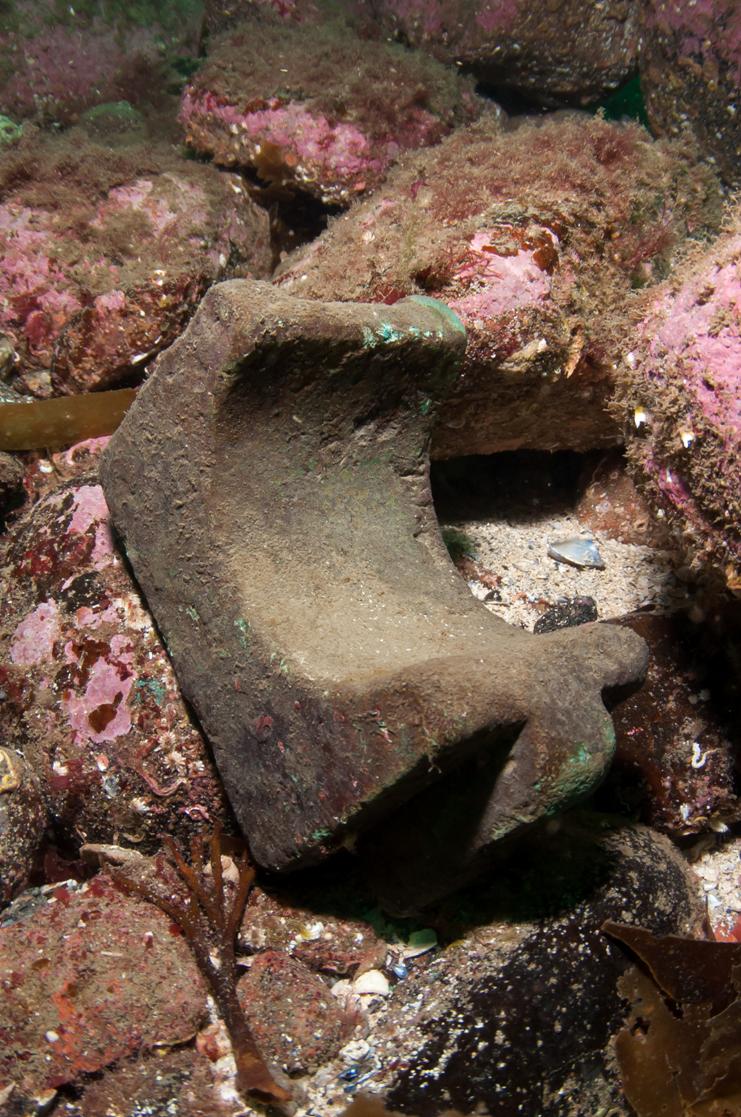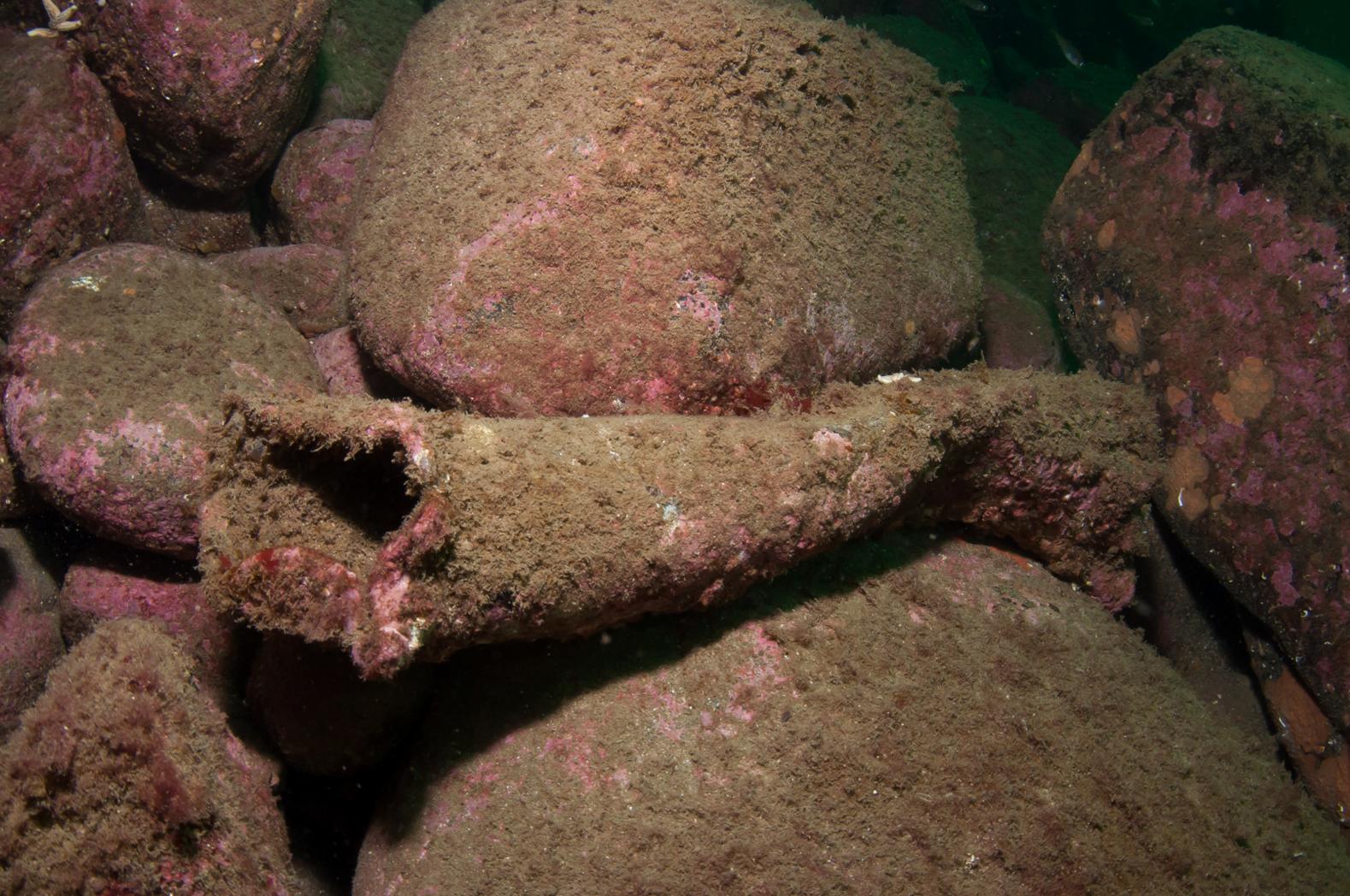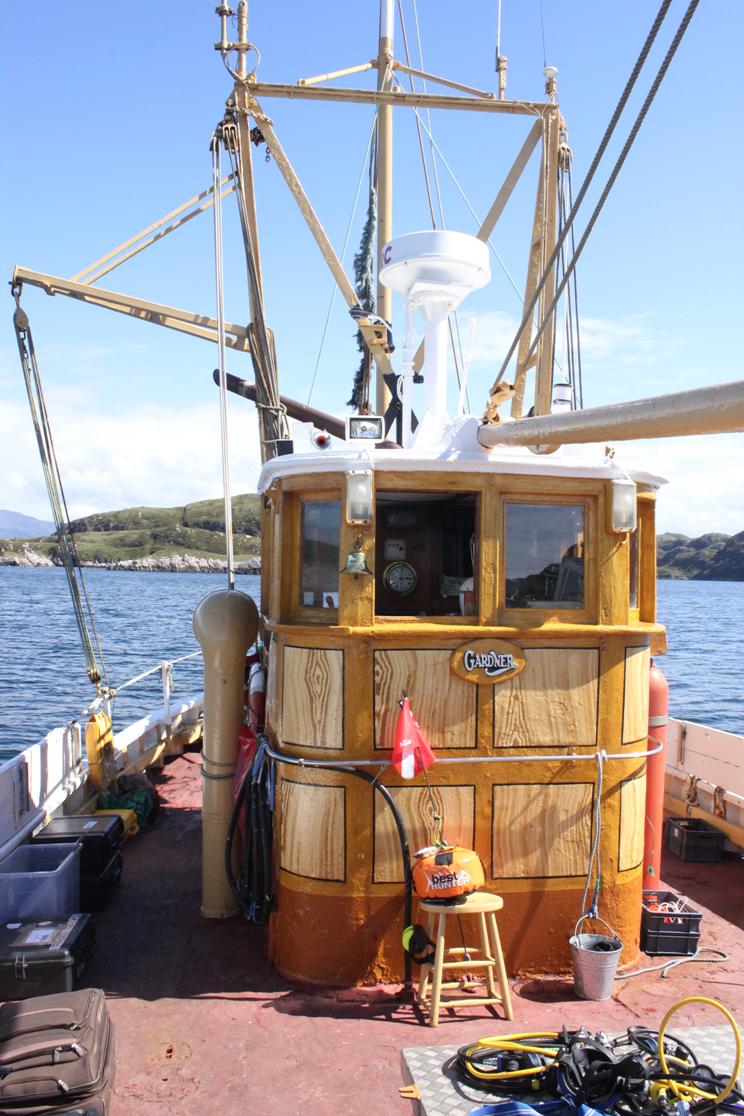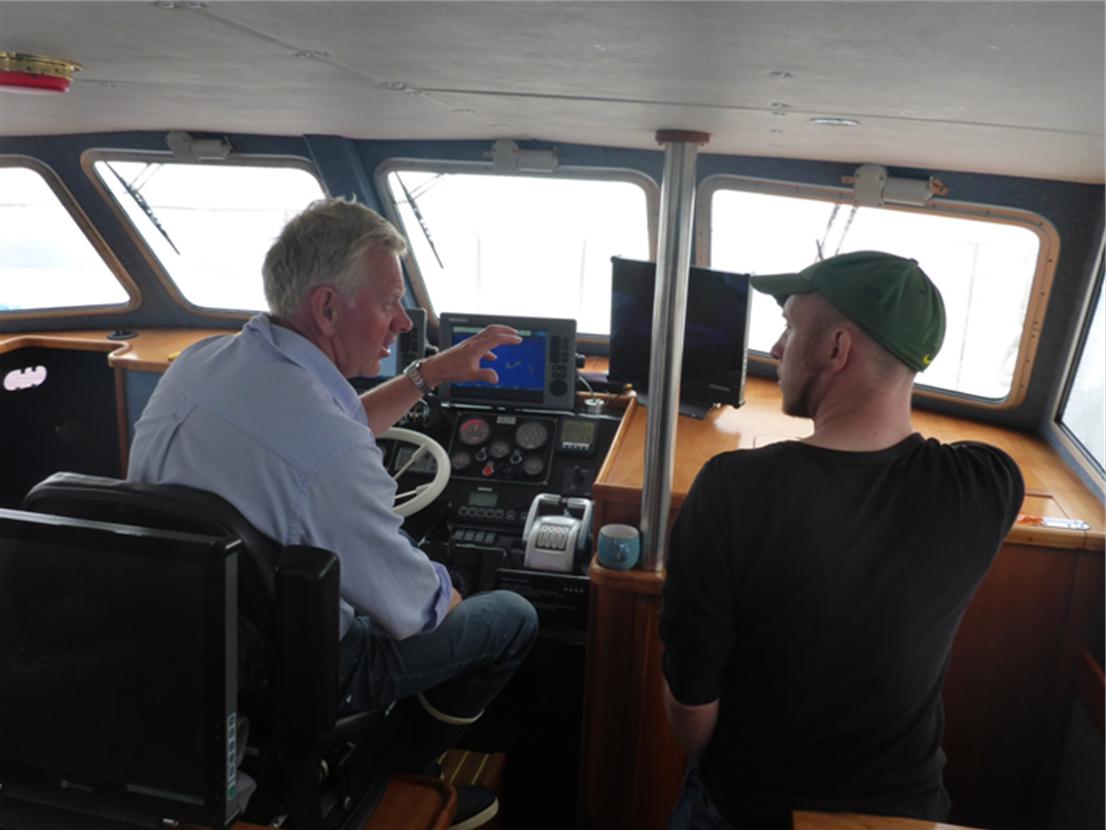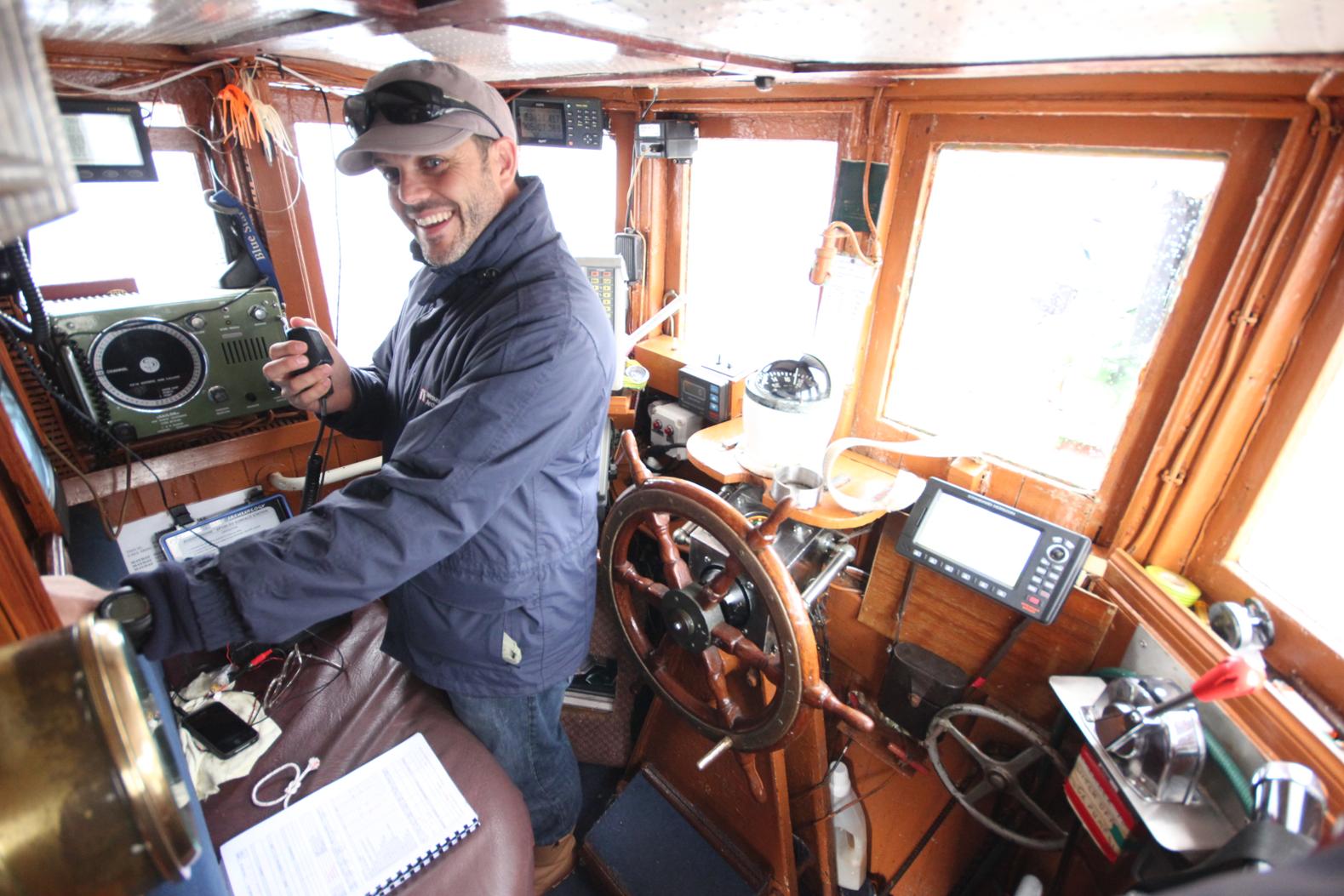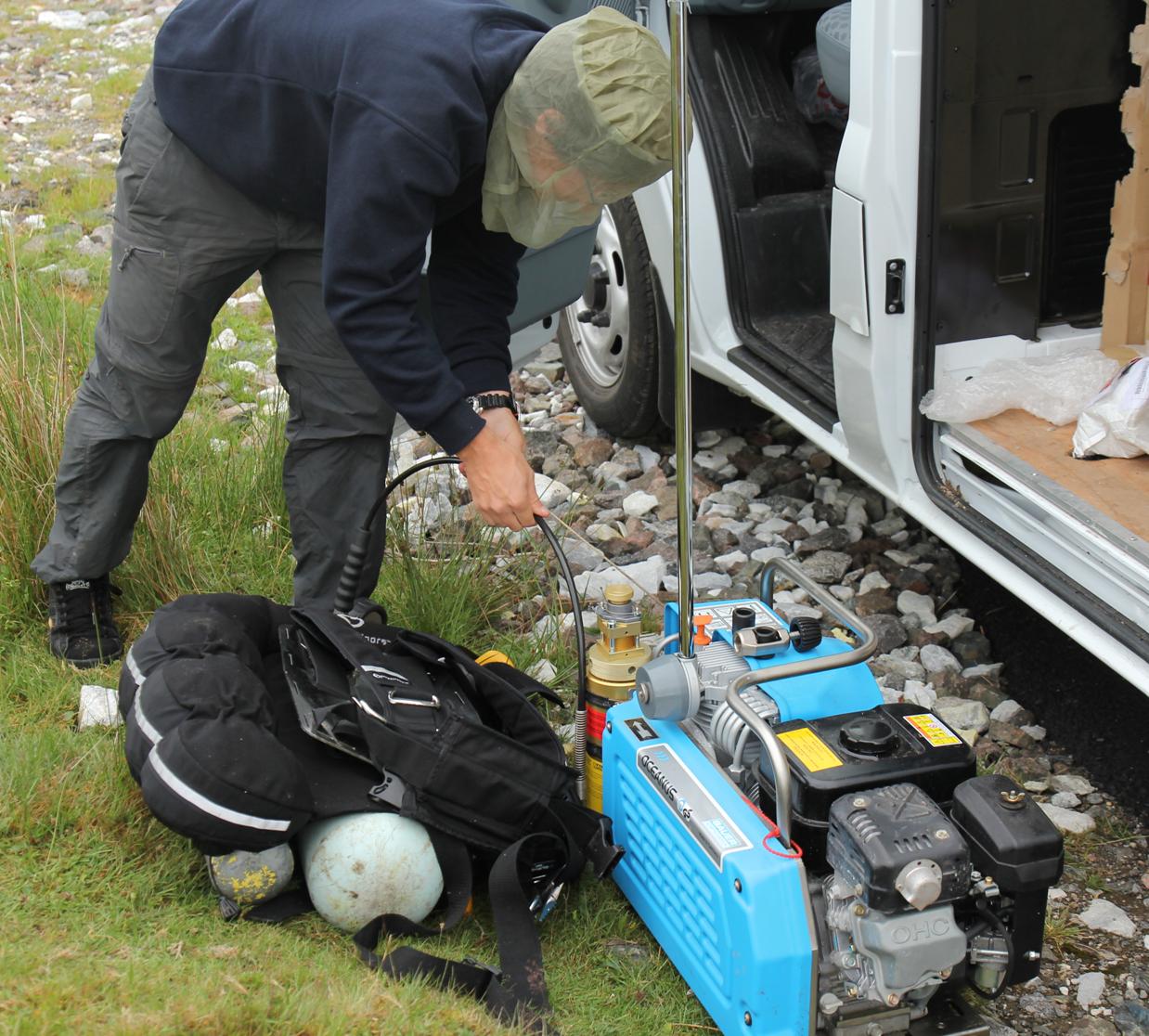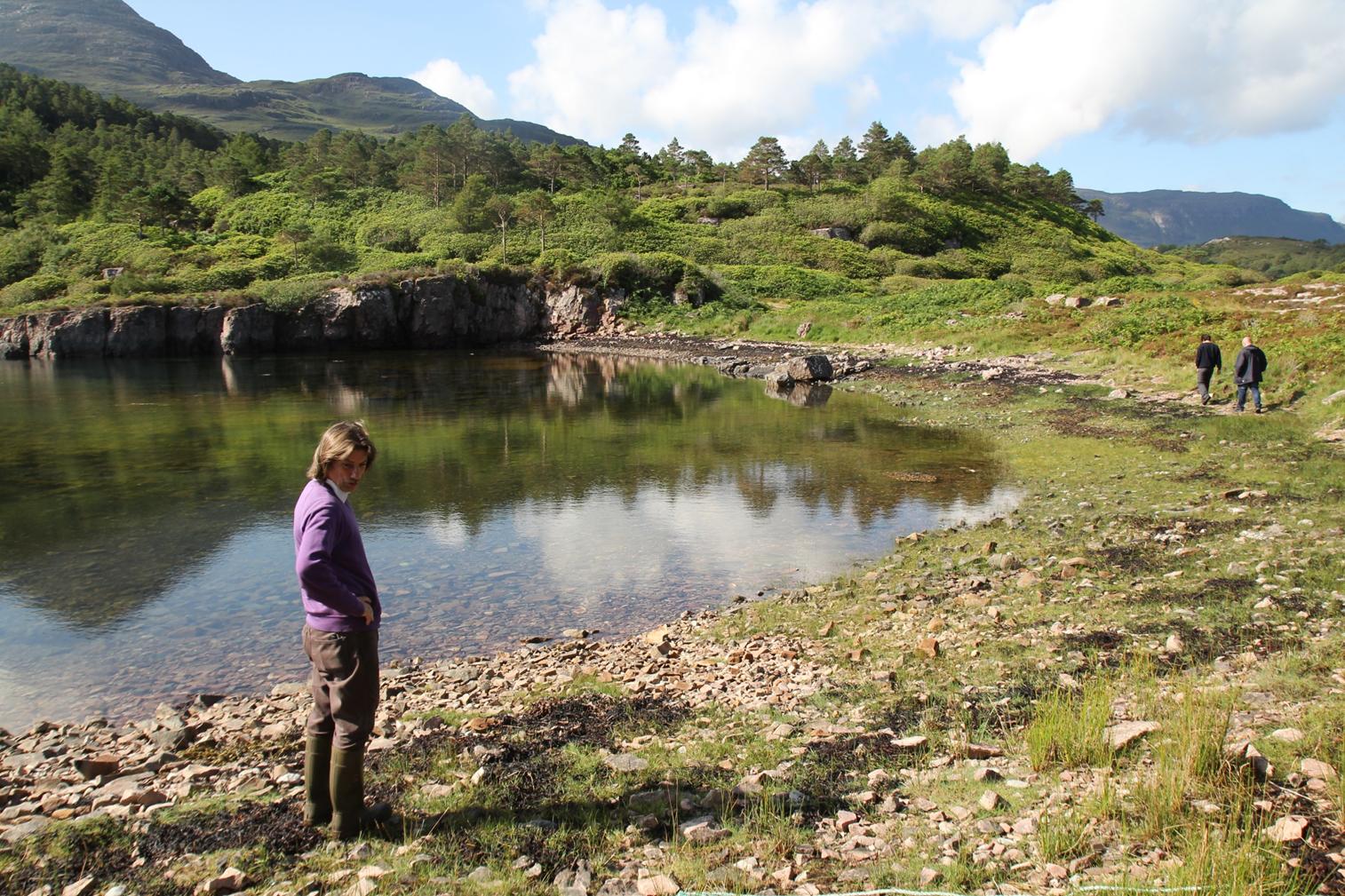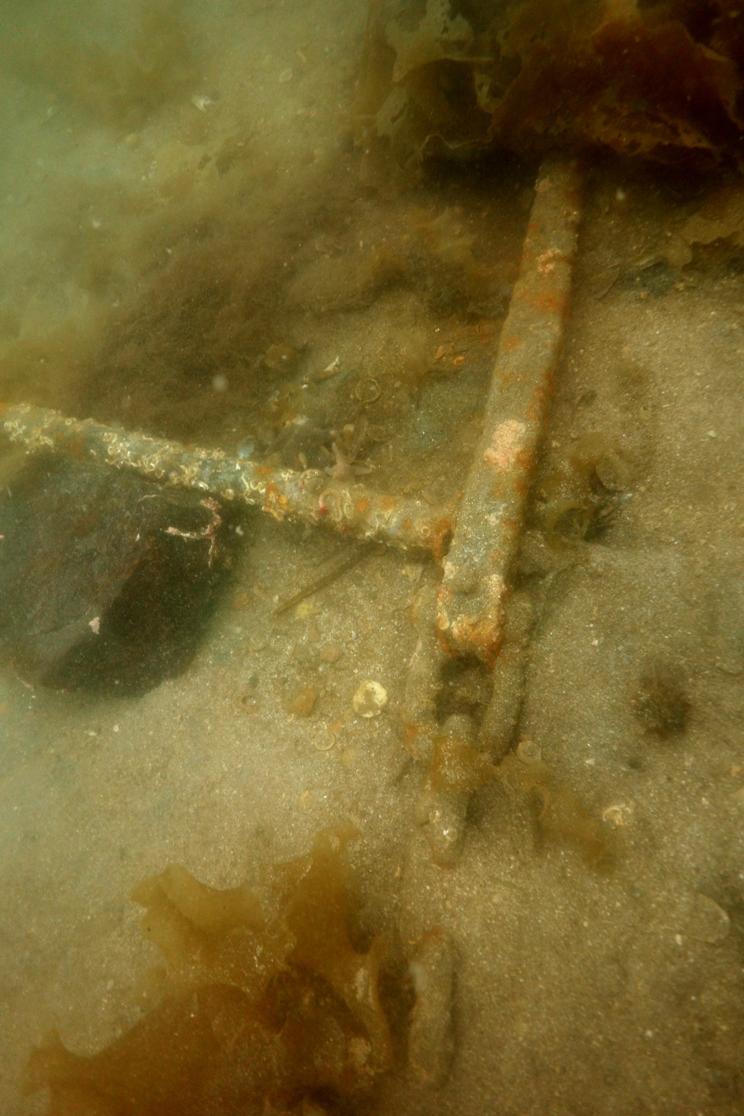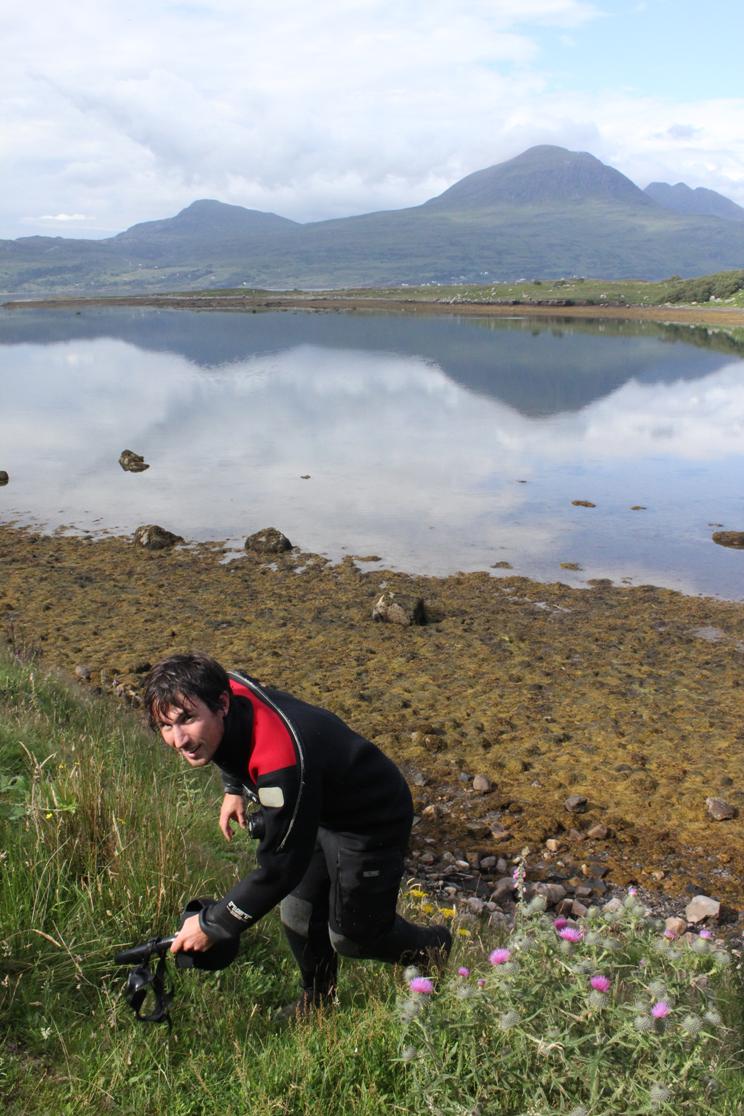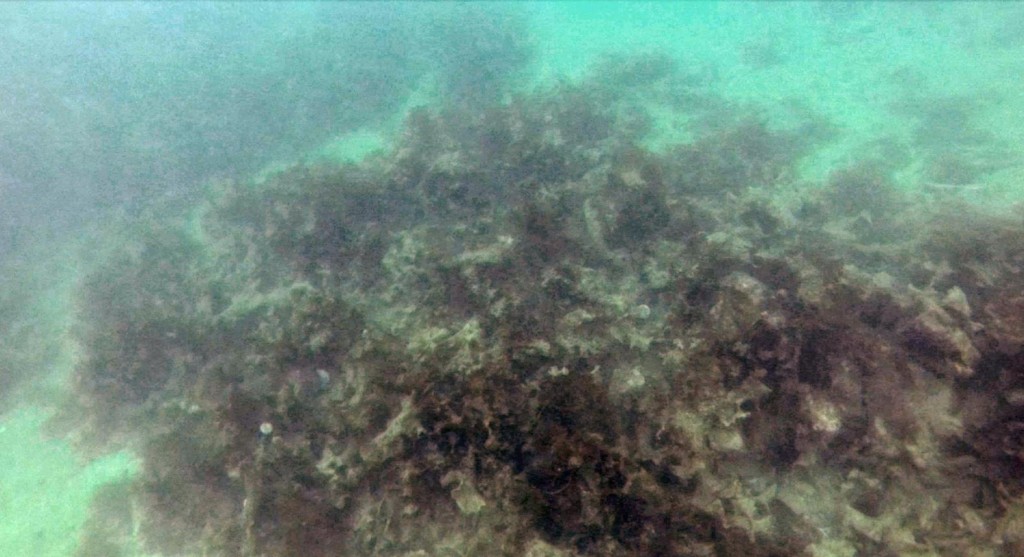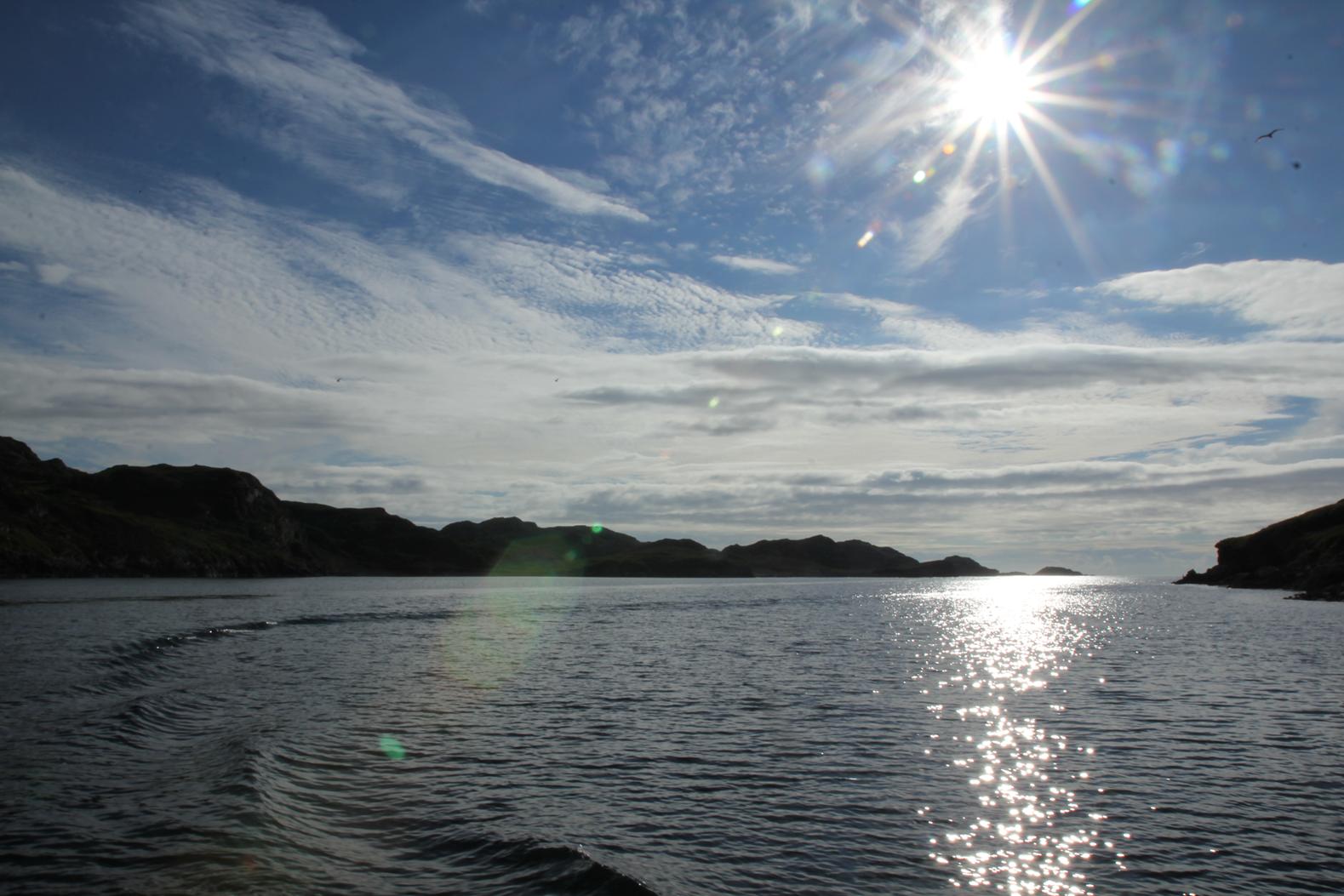These are some images from our dive survey at Murchadh Breac, Loch Torridon. This site was first identified by a local fisherman and further information on the site was given to us by local charter operators Kenny and Gemma Livingstone and local historian Robert Gordon, all who live in Sheildaig. This first image shows Robert Gordon in discussion with the SAMPHIRE team member John McCarthy on where best to target the survey.
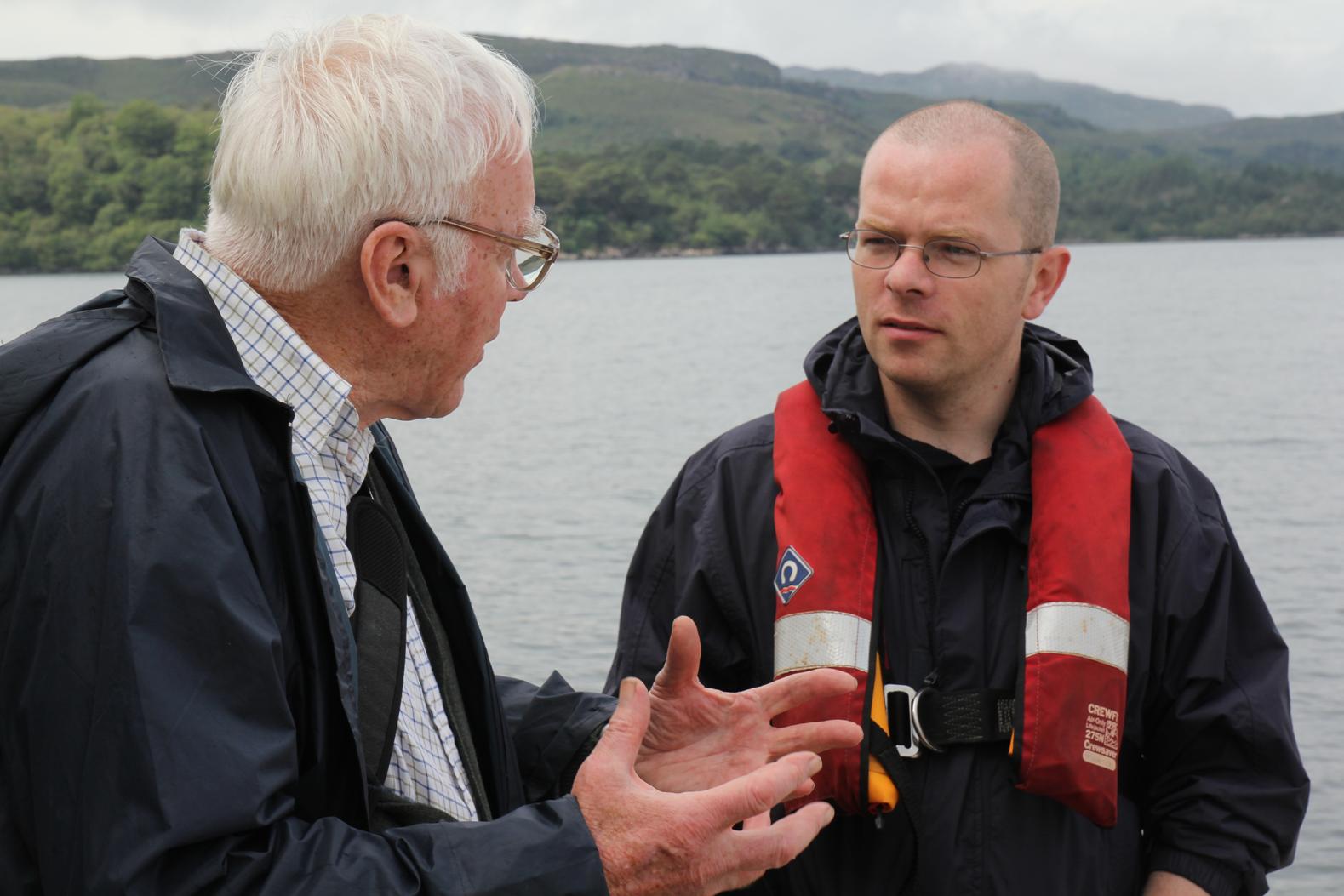 The underwater environment was heavily covered in kelp which hampered our search.
The underwater environment was heavily covered in kelp which hampered our search.
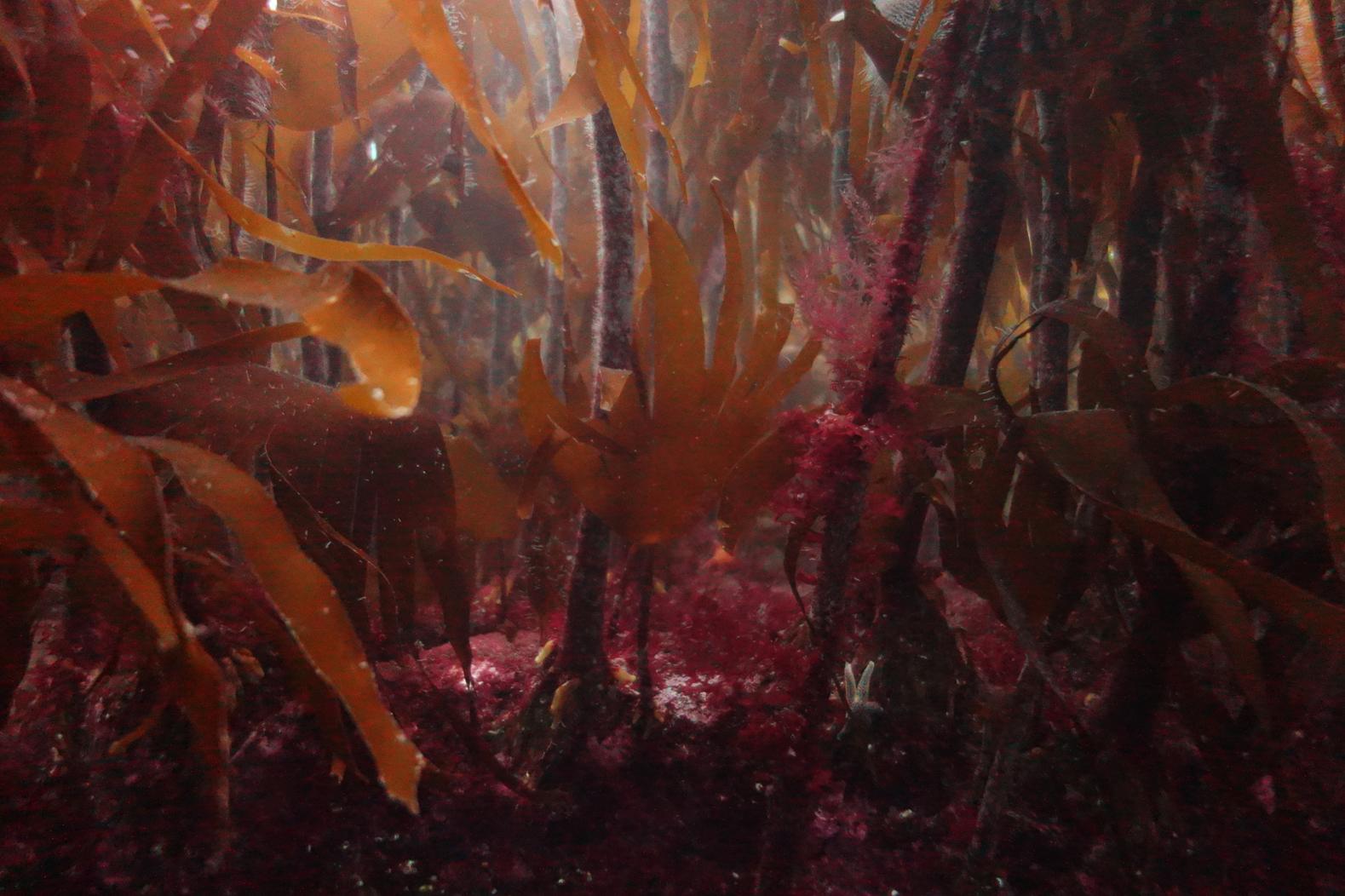
Gemma Livingstone deploying the ROV!
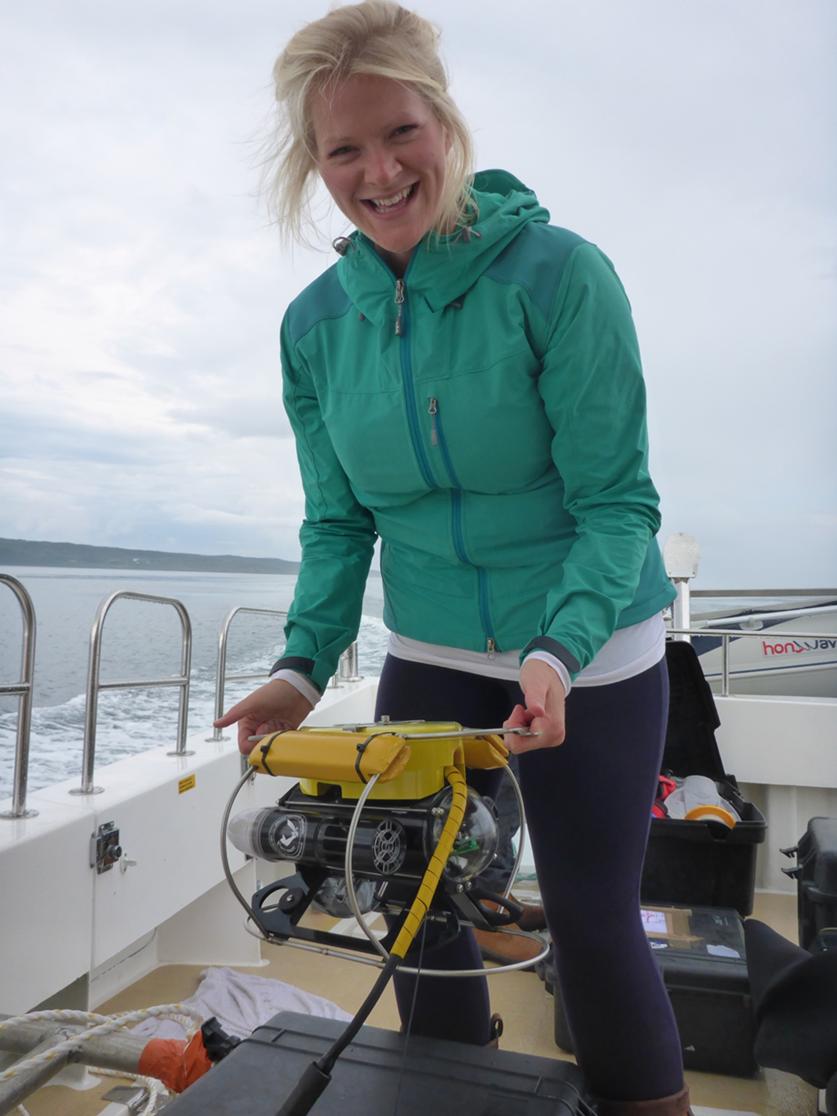 The day on the boat also gave us a great opportunity to pick the brains of the locals and we discovered that one of the local wrecks was visible in the intertidal part of a nearby burn at Chuaig Bay. Once the dive survey was complete the team headed ashore. We soon came across fragments of a wreck strewn across a wide area, including this well-preserved capstan. The locals informed us that the wreck was well-known locally despite not being recorded in the national archaeological databases and was called the Mafeking. According to local traditions the Mafeking was a salvage vessel, lost during an attempt to salvage the SS Sheila, another unlocated local wreck which we have coordinates for and which is reportedly visible near Chuaig Bay at very low tides.
The day on the boat also gave us a great opportunity to pick the brains of the locals and we discovered that one of the local wrecks was visible in the intertidal part of a nearby burn at Chuaig Bay. Once the dive survey was complete the team headed ashore. We soon came across fragments of a wreck strewn across a wide area, including this well-preserved capstan. The locals informed us that the wreck was well-known locally despite not being recorded in the national archaeological databases and was called the Mafeking. According to local traditions the Mafeking was a salvage vessel, lost during an attempt to salvage the SS Sheila, another unlocated local wreck which we have coordinates for and which is reportedly visible near Chuaig Bay at very low tides.
 You can also check out our first visit to the area in May, 2013 where we first met the locals and identified some potential site locations with them and our blogs from the day we carried out the dive survey on the 26th of July, 2013:
You can also check out our first visit to the area in May, 2013 where we first met the locals and identified some potential site locations with them and our blogs from the day we carried out the dive survey on the 26th of July, 2013:


